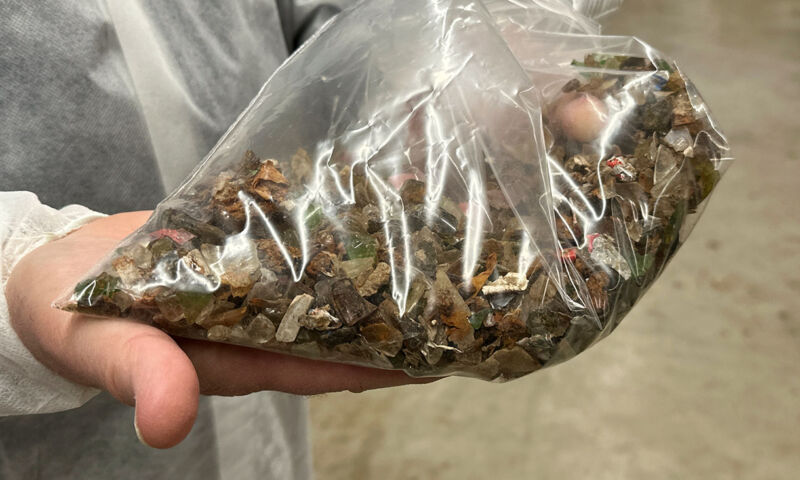“Energy-smart” bricks need less power to make, are better insulation

Enlarge / Some of the waste material that ends up part of these bricks. (credit: Seamus Daniel, RMIT University)
Researchers at the Royal Melbourne Institute of Technology (RMIT) in Australia have developed special energy-smart bricks" that can be made by mixing clay with glass waste and coal ash. These bricks can help mitigate the negative effects of traditional brick manufacturing, an energy-intensive process that requires large-scale clay mining, contributes heavily to CO2 emissions, and generates a lot of air pollution.
According to the RMIT researchers, Brick kilns worldwide consume 375 million tonnes (~340 million metric tons) of coal in combustion annually, which is equivalent to 675 million tonnes of CO2 emission (~612 million metric tons)." This exceeds the combined annual carbon dioxide emissions of 130 million passenger vehicles in the US.
The energy-smart bricks rely on a material called RCF waste. It mostly contains fine pieces of glass (92 percent) left over from the recycling process, along with ceramic materials, plastic, paper, and ash. Most of this waste material generally ends up in landfills, where it can cause soil and water degradation. However, the study authors note, The utilization of RCF waste in fired-clay bricks offers a potential solution to the increasing global waste crisis and reduces the burden on landfills."